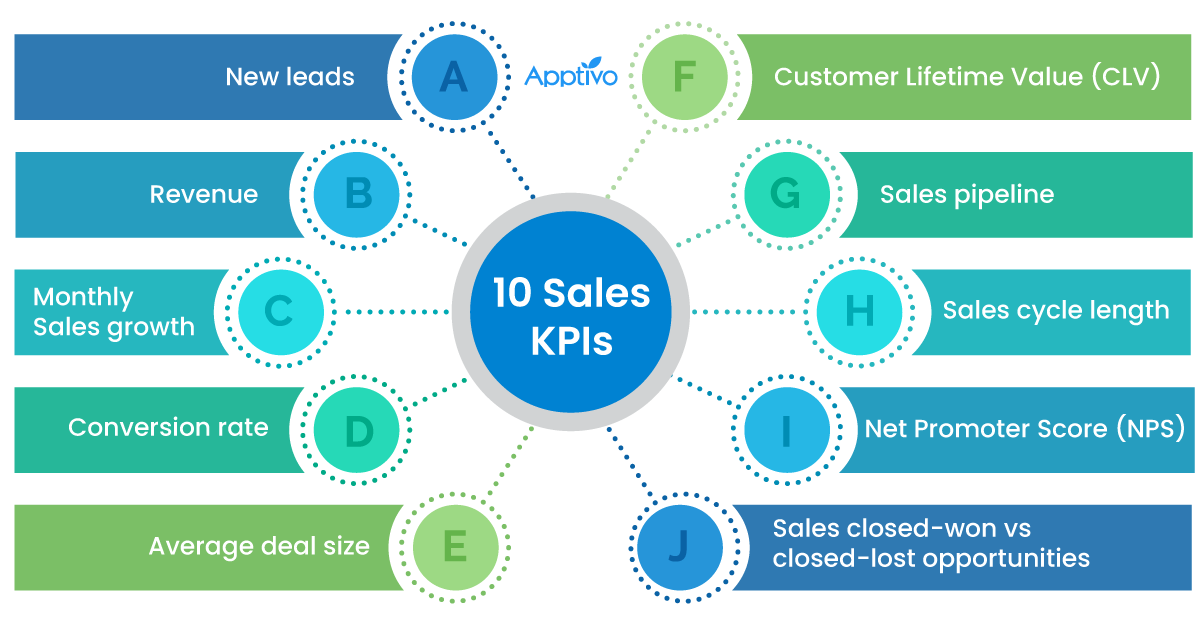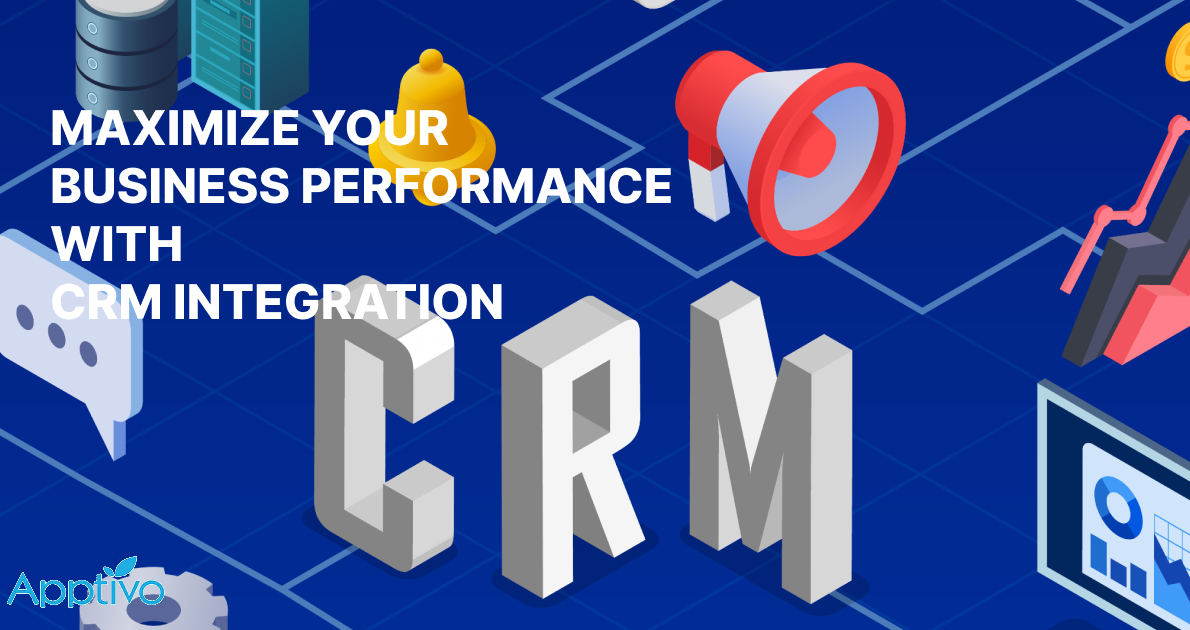 |
A company sets its sights on expansion, ready to conquer new horizons. But to ensure they’re heading in the right direction and making the most of their sales efforts, they need a compass, a guiding light. Key performance indicators (KPIs) come into play here. These metrics not only fuel the sales team’s success, but also hold them accountable for their actions. Selecting the perfect KPIs is like a blend of art and science, but fear not. Here are key sales KPIs that will energize any company and lead it to extraordinary success.
 |
10 Sales KPIs
Let’s look at a few key sales KPIs that provide full insights into the entire sales cycle, from the initial contact to the final transaction.
 |
New leads
Lead conversion rate stands out as a vital KPI for sales managers to regularly monitor. Consider the following:
In a software company, the sales manager is in charge of a team of reps entrusted with converting leads into software subscriptions. The manager can determine which salesperson exhibits extraordinary talents in effectively closing the most leads by meticulously measuring the lead conversion rate.
Furthermore, analyzing the data allows the manager to discover the exact locations or businesses that generate the most sales. This data is useful for finding profitable target markets and allocating resources strategically.
Evaluating which teams consistently accomplish their sales targets is an important component of monitoring the lead conversion rate. The manager delivers practical insights into the sales team’s success by delivering quantitative statistics to them. This data-driven approach helps the management discover areas for improvement, handle any issues that arise, and recognize and reward individuals or teams who consistently meet their objectives.
Revenue
Undoubtedly, revenue stands out as the most prominent and vital KPI to track. It provides a clear indicator of how much money a business is generating.
On a weekly, quarterly, and annual basis, the responsible owner meticulously monitors the company’s revenue. This practice is quite important because it enables the evaluation of upward or downward trends.
Sales Revenue = Number of Units Sold x Selling Price per Unit
Total Revenue = Sales Revenue + Other Revenue
Through vigilant revenue tracking, the owner gains profound insights into the business’s financial health and overall success. This metric not only quantifies the inflow of money but also serves as a cornerstone for shaping future goals in alignment with growth ambitions.
For example, a constant upward trend in income indicates good performance and motivates the owner to set even higher goals. A drop in revenue, on the other hand, serves as a warning, urging immediate action to address any issues.
By leveraging revenue data, rational choices about resource allocation, marketing strategies, and operational improvements may be made. This data-driven approach allows the owner to optimize expansion potential and maximize profitability.
Monthly Sales growth
For a business to thrive, it must continually focus on growing its sales. By incorporating this metric into a monthly sales dashboard, leaders can promptly identify issues and take action based on emerging trends. Establishing achievable monthly sales growth targets serves as a driving force for sales teams, ensuring their efforts consistently align with the organization’s expectations.
Consider a retailer that specializes in outdoor equipment. The company’s leaders can rapidly spot any obstacles or opportunities in their industry by attentively tracking monthly sales growth. For example, a dramatic drop in sales for a specific product category notifies them to research probable causes and make adjustments, such as launching targeted marketing campaigns or modifying pricing tactics.
Furthermore, the company can drive its sales employees by setting realistic monthly sales growth targets. These goals set a clear bar for success and motivate the team to pursue new leads, nurture customer relationships, and close sales effectively. It also ensures that the sales team’s efforts are congruent with the organization’s overall growth goals.
Monthly Sales Growth = (Current Month’s Sales – Previous Month’s Sales) / Previous Month’s Sales * 100
Using this approach, leaders can quantify the percentage of sales increase or loss from one month to the next, allowing them to make data-driven choices and take necessary actions to accelerate sales growth.
Conversion rate
Sales managers have to figure out the percentage of leads that successfully convert into customers because it is an important indicator for measuring the efficacy of their sales force. If the lead conversion rate is low, it implies that more emphasis should be placed on sales training.
Let’s look into a telecom company that provides a variety of services, including internet and phone plans. The main goal of the sales team is to convert leads (inquiries and prospects) into paying clients. Sales executives can determine how successfully their team is working in this area by regularly monitoring the lead conversion rate.
For example, if the lead conversion rate is low, it may indicate that the sales team’s abilities, processes, or tactics are lacking. To fix these vulnerabilities, sales managers might invest resources to comprehensive sales training programmes. boosting product knowledge, boosting communication and negotiation abilities, or refining sales strategies could all be part of this.
By monitoring this measure and identifying areas for improvement, such as through focused sales training programmes, companies can increase their team’s performance in converting leads and driving business growth.
Average deal size
Tracking the sales dollars generated from new transactions and the accompanying sales cycle duration provides useful information into the profitability of various offerings for a business. Managers can also use this indicator to compare the performance of sales reps.
A company that offers both monthly subscriptions and annual contracts must regularly analyze the sales dollars gained from new transactions and the length of the sales cycle so that the company’s leadership has a clear picture of which products are the most profitable.
For example, one sales representative may have sold 100 month-to-month memberships last month, while another representative successfully closed 20 larger contracts for yearly subscriptions. Managers can draw meaningful comparisons between representative performances by analyzing the average new deal/length size. This measure gives useful information about the revenue made per contract and the time required to close those deals.
Average New Deal = Total Sales Dollars Generated from New Deals / Total Duration of Sales Cycle
Managers can use this formula to calculate the average value of new deals based on their length. This data enables them to identify sales professionals that excel at rapidly and effectively concluding high-value transactions.
Tracking sales dollars earned from new transactions and the length of the sales cycle is critical for determining the profitability of different offerings and comparing sales representative performance. Using the formula for average new deal/length size provides real insights into revenue creation and sales efficiency, allowing managers to make informed decisions to promote business growth.
Customer Lifetime Value (CLV)
Customer lifetime value (CLV) is the total revenue a firm anticipates to generate from a client over the course of their business relationship. This statistic is critical for businesses since it helps identify high-value client segments and drives customer acquisition investment decisions.
Consider an online subscription-based streaming service that provides a diverse selection of films and television series. It wants to determine the lifetime worth of each customer. CLV is calculated by taking into account several criteria, including customer retention rate, average buy value, and average purchase frequency.
CLV = Average Purchase Value x Average Purchase Frequency x Customer Lifespan
To determine the customer lifetime value (CLV), a company considers the average lifespan of a customer (e.g., 24 months), the average purchase value (e.g., $15 per month), and the average purchase frequency (e.g., every two months, or 0.5 per month). By multiplying the average purchase value by the purchase frequency, they obtain the monthly customer value (e.g., $7.50). Finally, they multiply the monthly customer value by the average lifespan to calculate the CLV (e.g., $180).
Sales pipeline
A sales pipeline tracks the evolution of deals from the initial contact with a potential customer to the final sale. This statistic offers sales management with useful insights, allowing them to identify locations where deals may be stalling and require extra attention. Furthermore, it enables marketing managers to evaluate the efficacy of their plans.
For a software company delivering project management tools, the sales funnel, which includes steps such as prospecting, qualification, demonstration, proposal, and closing, is critical. Tracking the pipeline enables sales management to evaluate deal quantities and values at each stage, detecting bottlenecks and problem areas. Furthermore, marketing managers can assess the efficacy of their methods in generating leads and assisting their progression through the pipeline. Based on pipeline data, collaboration between sales and marketing optimizes the sales process, streamlines the customer journey, and drives revenue growth.
Sales cycle length
Analyzing the average sales cycle length is important for evaluating individual rep performance and determining the most effective technique for completing business. It matters most to examine attrition rates and customer satisfaction in relation to sales cycle length.
For example, if one sales agent wins transactions quickly but their customers churn after a short period of time, a lengthier sales cycle may result in a more sustainable business.
Sales closed-won vs closed-lost opportunities
It gives useful information on the effectiveness of their sales efforts as well as the success rate of their deals.
To calculate this KPI, firms must compare the number of prospects that were successfully closed vs those that were lost. For example, if a company closed 20 deals and lost 10 prospects in a particular period, its ratio would be 2:1 (or 66.7%).
Keeping track of this KPI enables firms to assess the success of their sales staff and find areas for development. A high closed-won-to-closed-lost opportunity ratio shows great sales performance and effective deal-closing methods. A low ratio, on the other hand, shows that transforming chances into successful sales may be difficult.
Net Promoter Score (NPS)
Net Promoter Score (NPS) is a measure that determines how likely customers are to suggest your products or services. It is assessed using surveys or in-app prompts. A score of less than 9 suggests that difficulties should be addressed to avoid growth barriers. Businesses may enhance customer satisfaction, encourage positive referrals, and drive growth by monitoring NPS and acting on feedback.
Footnotes
In today’s competitive business, effective data leveraging is critical to success. KPIs are critical for sales managers to track. It reveals both performance strengths and places for growth. Sales managers may stay focused and track success properly by picking relevant KPIs that are connected with corporate objectives. Ignoring KPI measurement can lead to failure. Data analysis enables strategic improvements and accurate implementation. Sales managers create the road for exceptional performance by linking KPIs to specific targets. Accept the power of KPIs to propel your sales to new heights and achieve remarkable success.
Latest Blogs

Apptivo's Integration with Amazon SES for Outgoing Email Server
Amazon Simple Email Service (SES) is an email platform that provides an easy, cost-effective way to send and receive email using your email addresses and domains. Apptivo has migrated its email service to Amazon SES (Simple Email Service) to enhance the performance and reliability of our email services
Read more →
EXPLORING MULTI CHANNEL CUSTOMER SUPPORT SOFTWARE
1.What is customer service software? 2
Read more →
Maximize your business performance with seamless CRM Integration
1.What is CRM Integration? 2
Read more →
